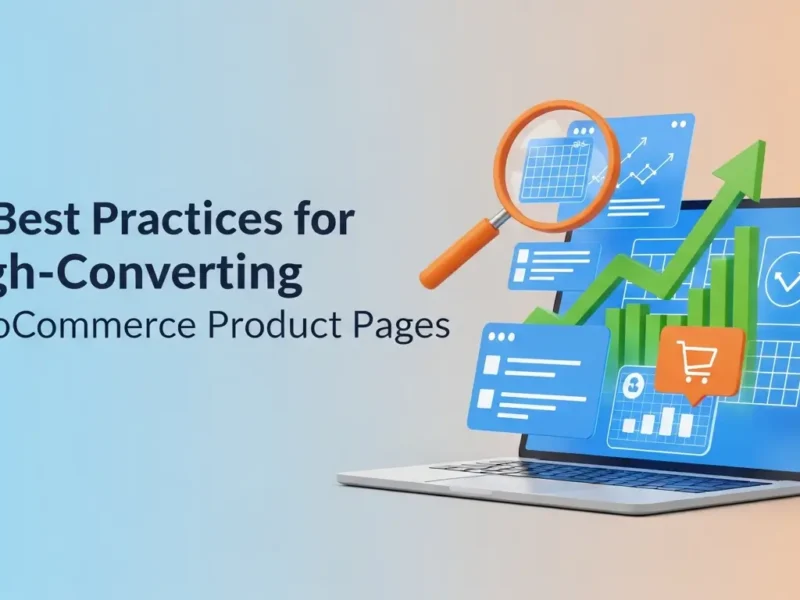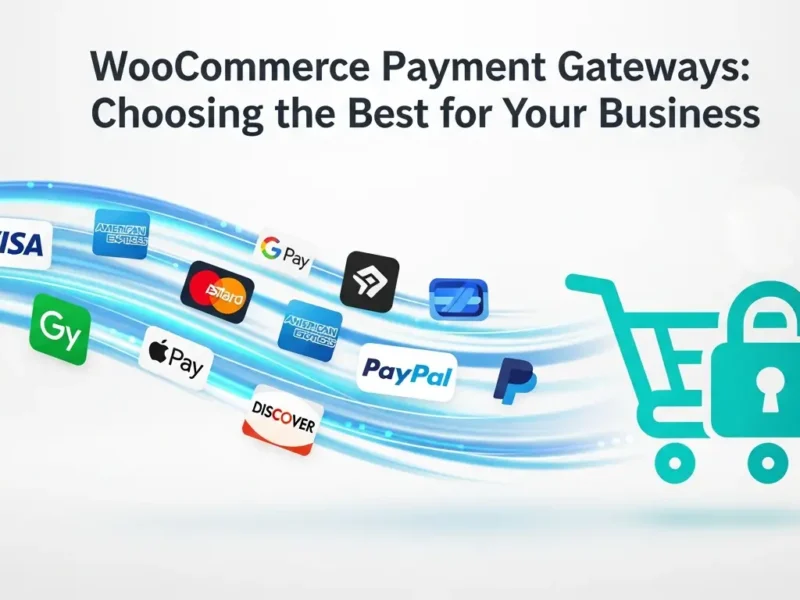Cart abandonment rates stand at a staggering 70%. This means that most items added to the shopping cart do not translate into actual purchases.
But why is this happening?
Why aren’t card additions translating into completed purchases?
One key reason is that many users aren’t adding items with the intention to buy. Instead, they’re comparing prices across different ecommerce stores, casually browsing, or simply exploring products out of curiosity.
In short, a large portion of these abandonments happen because people aren’t serious about buying.
That said, there are many other reasons why people leave the cart halfway through without making any purchases. These could include high shipping costs, a lengthy or complicated checkout process, mandatory account creation, or other factors.
This blog will provide a brief statistical analysis of the top reasons behind cart abandonment and share 10 proven ways to reduce it.
Let’s start with the basics before we delve into the data and solutions.
What is Shopping Cart Abandonment?
When a user visits an online store and adds products to their cart but leaves without completing the purchase, this is called shopping cart abandonment.
Difference Between Cart Abandonment vs. Checkout Abandonment
As mentioned above, cart abandonment happens when a user adds items to the cart but leaves the site before initiating the checkout process.
On the other hand, checkout abandonment happens when the user begins the checkout process but leaves it halfway without completing it.
Understanding the difference between the two helps businesses understand why users are dropping off, allowing for more targeted improvements.
Common Reasons for User to Abandon their WooCommerce Cart
There’s no single reason why shoppers abandon their carts. However, if you had to name one of the most common causes, it would be window shopping – users browsing casually, comparing prices, exploring gift options, and more. These are largely unavoidable reasons for cart and checkout abandonments.
But beyond these, several avoidable factors drive users to leave mid-purchase. Here’s a breakdown of the most common reasons why shoppers abandon their carts or checkout pages:
- 39% Additional Costs, such as shipping, tax, and fees.
- 21% Delivery is very slow
- 19% Unwilling to disclose credit card information
- 19% Account creation mandatory
- 18% Long and complicated checkout process
- 15% Returns policy unsatisfactory
- 15% websites had errors / crashed
- 14% Failed to calculate total order cost up-front
- 10% Lack of payment methods
- 8% Credit card declined
Cart abandonment is common, but thankfully, it can be addressed. In the next section, we’ll explore 10 tried-and-tested strategies to reduce cart abandonment in WooCommerce.
10 Proven Ways to Reduce Cart Abandonment in WooCommerce
Reducing cart abandonment requires a strategic approach. There are several actionable ways to recover lost revenue, from analyzing customer behavior to tweaking the checkout form to retargeting ads. Below are 10 proven strategies to help WooCommerce store owners tackle cart abandonment effectively and boost conversion rates.
1. Analyze Customer Behavior on the Website
Analyzing customer behavior on the website will help you determine why customers abandon their carts.
Think of these questions to find out why users are abandoning their carts:
- At what point are users abandoning the most? Is it on the product, cart, shipping, or payment pages? Most customers tend to leave the cart after finding the final product amount.
- Consider the product view to cart add ratio. Are users checking the product over and over again? Specifically, which parts are they viewing the most? And, most of all, what’s preventing them from taking the final call?
- Are they returning to the cart after abandoning it once? If not, what strategies can be adopted to make them revisit the cart?
- Which device is facing higher shopping cart abandonment rates? Tablet? Mobile? Desktop?
- This will help you narrow down the device that’s giving problems and mitigate them.
- Is the user leaving the store after adding a few products to the cart? If yes, one reason could be that they didn’t find enough similar products, which led to the abandonment.
- Are users removing items from their carts, and how often is this happening? This will give you some idea of why people are abandoning their carts.
Once you find answers to these questions, you can change the UI/UX design to consider the user journey.
For instance, while analyzing cart abandonment analytics, you found that most users abandon their carts when they reach the payment page. You now know what corrective steps you need to take to prevent this.
2. Offer Installment Options
A high cart value may be highly pleasing to a WooCommerce retailer, but it’s less pleasing to customers, resulting in abandoned carts.
One way to address this issue is to allow customers to pay in installments. Several retailers, including Amazon, offer this option on their shopping cart pages, making completing the order easier for customers.
Though installment options could inspire shoppers to complete their purchases, they may still abandon their cart if you don’t offer them multiple payment options.
3. Offer Multiple Payment Options like Google Pay and Apple Pay
Conversion experts recommend multiple payment methods, such as Google Pay and Apple Pay, to minimize cart abandonment. Websites that offer multiple payment options have experienced reduced cart abandonment rates.
WooCommerce offers payment gateway plugins that support popular payment services, including local and popular ones, which could be free or premium. So, integrate your store with as many payment gateways as possible to reach more customers, helping customers purchase products easily, and reduce cart abandonment rates.
Keep in mind that each payment gateway has different transaction fees. Compare them carefully before deciding which one to install.
Despite offering payment through installments and multiple payment options, shoppers still abandon the cart. Now, what could be the reason? Do you offer paid shipping or free shipping?
4. Offer Free Shipping
70% of people shop online because of free shipping. So, if you offer products with high shipping costs, customers will likely abandon their carts.
International data backs this up:
- 66% of UAE shoppers were ready to wait between one and seven days for free international deliveries.
- In India and China, 58% of people share the same sentiment.
- In Australia, 66% of the shoppers are willing to wait for at least 14 days for free shipping. Shoppers in Brazil, Japan, and South America show similar behavior.
If offering free shipping cuts deeply into your profit margins, especially for small orders, try one of these strategies:
- Set a minimum order threshold for free shipping to increase the average order value.
- Bundle shipping costs with the product price to offer free shipping while maintaining profitability.
Okay, so far so good. You already offer multiple payment options to customers, plus they are free to choose different installment methods for payment, not to mention free shipping.
All these corrective measures may have reduced cart abandonment rates to a greater degree. What next?
5. Use Intent-based Incentives
Using intent-based incentives helps reduce cases of online shopping cart abandonment.
Sometimes, even after offering the best shopping cart experience, the customer has no intention to buy a product but simply adds items to the cart, and then a conversion may seem impossible.
- Customers are browsing and adding items to the cart with no intention of completing the purchase.
- Often, customers are in two minds and unsure whether they need the product.
Whatever the case may be, you need to incentivize the customers to make purchases immediately by offering intent-based incentives:
- Create a sense of urgency by providing limited-time promotions
- Boost same-session conversions with scarcity tactics like limited-time offers or low stock alerts.
- Offer personalized promotions based on user behavior.
You can implement these ideas using exit intent technology to encourage conversions from visitors about to abandon their shopping carts.
6. Strategic Messaging through Exit Intent PopUps
The exit intent pop-up is triggered when the customer shows signs of abandoning the store. Powered by Exit Intent Technology, this advanced feature detects user behavior, such as cursor movement towards the browser bar on a desktop, prompting a timely message before they leave.
Businesses can experiment with the Exit Intent technology in several ways. Here are a few ideas for you to explore for your WooCommerce.
- Offer discounts or promotions to attract users to stay and complete their purchase.
- Encourage users to join your email list for updates or personalized content.
- Provide free ebooks, webinars, or similar resources in exchange for contact details.
- Recommend relevant Articles or Products based on their browsing history.
- Customize pop-up messages based on the page they’re viewing or user segment.
When used strategically, exit intent technology could help WooCommerce owners reduce the bounce rate and boost conversion rates.
Find WooCommerce developers on GoodFirms that can help you implement Exit Intent technology and other strategies to drive more sales and reduce cart abandonment rates on your WooCommerce store.
After implementing all these measures, if you still find your cart abandonment rates on the higher side, it’s time to tweak your checkout page—or shorten it, to be precise.
7. Shorten Checkout Process by Removing Unnecessary Fields
A significant 28% of shoppers abandon their carts because of lengthy checkouts. One simple way to shorten the checkout process is to remove unnecessary fields like “Company Name” and “Address 2.” WooCommerce owners can even offer a guest checkout option.
Here, we have listed a few ways to shorten the checkout process:
- Remove unnecessary fields like ‘Address 2.’ A checkout with just two steps gets the highest conversions.
- Enable guest checkout, helping customers make purchases without account creation.
- Remove the shipping address entirely if your products don’t require shipping.
- Use Plugins such as “WooCommerce Direct Checkout” or “WooCommerce Checkout Field Editor” to customize the checkout form
- Use WooCommerce’s ‘One Page Checkout’ extension to place the checkout form directly on any page.
The WooCommerce Checkout Field Editor extension starts at $49, and it’s worth the investment. Once you have made changes to the checkout page, next thing that you can do is to add social proofs to your product pages, if you haven’t done that already.
8. Let your Social Proof Be Loud and Clear
Humans trust other humans, so they are less likely to abandon their shopping cart when they see other people liking a product they want.
You can make the most of this human trait by adding these aspects to your product description pages:
- Client Testimonials,
- Online Ratings,
- Behind the Scenes,
- User Generated Content,
- Social Media Presence.
When shoppers see your store’s high ratings and reviews, they are inspired to buy the product immediately without second-guessing their decision.
According to a recent study, 61% of people avoid purchasing without trust badges on the website. And that’s no small number. And, no, they are not looking for any logo but popular trust logos.
So, to ensure that customers don’t abandon their carts, it’s better to get your act together and place trust logos on your website’s home page, including your product detail page and checkout pages. Nope, it doesn’t stop here! Plan to send abandoned cart emails to users who refuse to return to your website, no matter the incentives you offer.
9. Send Abandoned Cart Emails to Reengage Customers
Sending Abandoned Cart Emails should be one of your last strategies for customer re-engagement. Once you are sure you have done everything to optimize your cart, you can finally move towards sending abandoned cart emails.
One of the most heartening aspects of sending abandoned Cart Emails is that it has a 40% open rate, so sending such emails to re-engage customers will be helpful. By promptly sending abandoned cart emails, you can address customer concerns and encourage them to complete their purchases.
Tools like Drip or Mailchimp enable you to set up automated triggers based on customer behavior, which ensures abandoned cart emails are sent on time.
10. Retargeting Ads
Your efforts to reduce the cart abandonment rate shouldn’t stop with cart abandonment emails. Use cookie-based targeting backed with advanced programming to retarget customers with ads for products added to their cart. Dubbed retargeting ads, the more a customer is exposed to your ads, the higher the chances of brand recall and reduced cart abandonment.
Final Words:
WooCommerce store owners cannot wish away cart abandonment; however, they can work on reducing their abandonment rates by tracking the reasons for it. Businesses can refine their checkout experience and improve conversion rates by understanding why customers abandon their carts.



